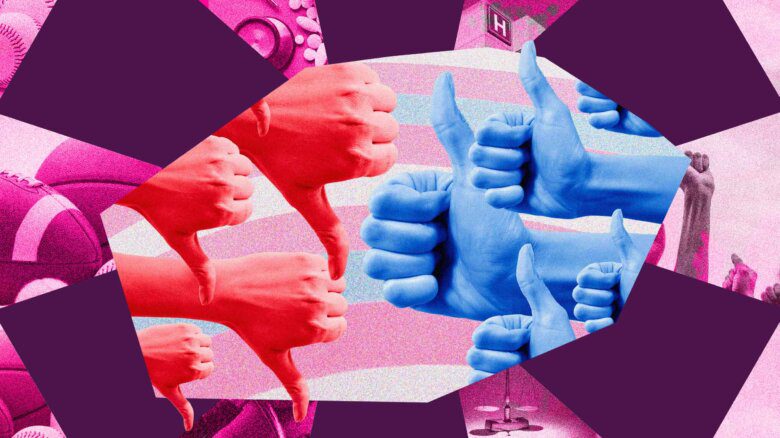Last night, I attended the candlelight vigil in Toronto for Chris Skinner. It was a somber yet somehow thrilling evening — a powerful reminder of the beauty and strength we see when a thousand of us come together in a single cause. Sure, there’s the annual Pride parade or the occasional Madonna concert but this was a display of true community as we gathered to honour our friend and neighbour.
Skinner’s death was a huge blow to Toronto’s image of itself as a safe haven and thus a big story. I’ve been asked a few times this week why I didn’t say anything about it here on the Roundup. Surely I could stop my round-the-clock coverage of Levi Johnson‘s penis to discuss something important, no? Well frankly, I was itching to but didn’t because
1) I tend to stay away from Toronto-centric news on what is a national blog
2) the Roundup is meant to be a light, pop take on the day’s events (gay in every sense!) and
3) my Xtra colleagues Rob Salerno, Matt Mills, Brent Creelman and Michael Pihach have already covered the story so far in great and skillful detail. No need for my chatter there.
But one thing nagged at me: the constant discussion around whether or not Skinner’s murder was a hate crime. The extreme viciousness of the crime certainly leads to that conclusion but the police are insisting that there are many other possibilities. They’re factually correct, of course, but what’s breaking my self-imposed silence is a comment I heard this weekend — a man who “heard from a friend” that, in his fatal encounter with the occupants of that black SUV, Skinner may have brought the attack on by striking the truck with his hand as it drove by. It’s entirely possible, he said, that Skinner was “drunk and angry.”
Now I never got to meet Chris Skinner but friends in common tell me he was anything but. The police, however, are duty-bound to jump in and say that, well, anything’s possible. An anonymous commenter on the Towleroad blog snarked, “I’m so glad being gay makes us immune to getting drunk and saying
stupid things, while projecting a sobering effect on others so all
their actions are rational and intentional.”
But while we all play our game of amateur trial jury, let’s just remember that “drunk and angry” is the classic defense lawyer’s gambit — a way of defusing the crime by putting partial blame on the victim. It takes two to tango, they say, but we’ve heard this song before.
Just a couple months ago, in Toronto, bike courier Darcy Allan Sheppard argued with the driver of a car that raced up from behind him at an intersection. Sheppard was allegedly drunk and angry so the driver stepped on the gas, dragging the cyclist a block before grinding him under the car’s wheels. Earlier this year, police in Bay City, Michigan, were called in to apprehend a drunk and belligerent 15-year-old boy. They handcuffed, then tasered him and the boy died.
And will we ever forget the infamous ABC News ’20/20′ piece in 2004 that attempted to shatter the Matthew Shepard “myth” by telling how a drunk and horny Shepard came on to his eventual killers. The piece inspired conservative blogger Pam Meister to write that Shepard “was a troubled young man who was HIV positive and into the drug scene too” (drunk and angry!) and it led North Carolina Representative Virginia Foxx to oppose proposed hate crime legislation in the US with this speech:
It’s a tactic based on reasonable doubt that gets trotted out again and again: pour a few beers into guys like Shepard and Skinner, it’s said, and hey, shit happens. Anything’s possible.
But nothing I’m hearing in all this talk of what possibly happened in Toronto last weekend goes into what probably happened. Let’s turn the story around with a quiz:
You’re an ordinary, tank-top-loving straight guy, out driving around with your buddies on a Saturday night when some drunk and belligerent guy smacks your black SUV with his hand. Do you:
a) keep driving, smirking at the awesomeness of your fortress of truck
b) honk your horn and give the guy the finger as you keep driving
c) stop the car, lean out the window and yell at the guy
d) stop the car, get out and argue with the guy
e) stop the car, get out and punch the guy in the face
f) beat the guy down and kick him
g) beat the guy down and kick him, with your friends joining in
h) beat the guy down and kick him, with your friends joining in, then get back in the truck and RUN THE GUY OVER
i) do all this and then drive away in a panic and refuse to turn yourself in to police
– answering a-c means you’re responding to a drunk and belligerent guy in a typical manner
– answering d-f means you have no justification, sorry, for being a violent asshole
– answering g-i means you’re a goddamned monster.
The police may eventually conclude that Skinner somehow incited a road rage attack by a pack of goons full of alcohol, drugs or even steroids. All this is possible. But I remain convinced that most incidents like that would end at f, maybe g, while Chris Skinner’s homosexuality is the most probable reason for this horrific escalation in brutality. I’m still willing to bet it’s a hate crime. How about you?

 Why you can trust Xtra
Why you can trust Xtra


